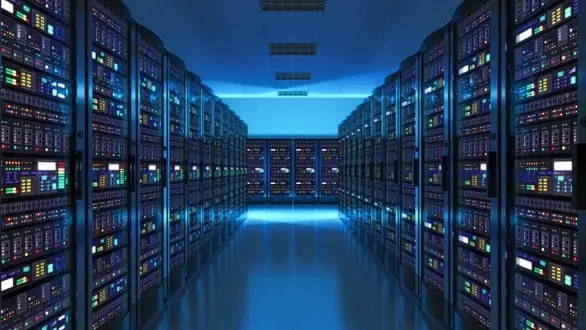The digital age has propelled data to the forefront of every industry. Businesses of all sizes, whether medium or large scale, are generating and storing massive amounts of information. Consequently, it has driven the need for strong and scalable data centers. In fact, statistical reports highlight the fact that over 20% of global data is generated from India but has only 2% of data centers.
With this big a number, it becomes a rising concern as industries continue to grow and evolve. There is a very high demand for next-gen data centers to accommodate this ever-increasing demand. Therefore, today’s agenda has been set to shed some light on the considerations to make data center designs efficient, reliable, and sustainable facilities.
Understanding the Evolving Needs of Data Centers
The data center industry is currently going through a roller coaster ride which is mainly due to the immensely growing data storage requirements. Here are some key factors driving the need for next-generation design:
- Exponential Data Growth: The volume of data being generated continues to explode. Industries like artificial intelligence, big data analytics, and the Internet of Things (IoT) are significant contributors. Data centers need to be adaptable to accommodate this ever-growing footprint.
- Cloud Adoption: The shift towards cloud computing necessitates data centers that can handle dynamic workloads. Scalability and flexibility are necessary to cater to fluctuating demands.
- Sustainability Concerns: Data center designs are known for their high energy consumption. Eco-friendly designs with a focus on energy efficiency and reduced carbon footprint are becoming increasingly important.
- Security Threats: Data security is a critical concern. Data centers require robust security measures to protect sensitive information from cyberattacks and unauthorised access.
Key Considerations for Next-Gen Data Center Design
There are several things that make a data center well-equipped and ready for use. However, today, the requirements have changed. Hence, here are a few crucial considerations to keep in mind when looking for next-generation data centers:
- Modular Design: Modular construction allows for flexible and scalable data centers as components can be easily accommodated basis changing requirements.
- Energy Efficiency: Utilising energy-efficient cooling systems, renewable energy sources, and smart power management strategies can significantly reduce the environmental impact.
- High-Density Computing: Denser server racks and storage solutions help optimise space utilisation and improve energy efficiency.
- Advanced Cooling Systems: Liquid cooling technologies provide more efficient heat dissipation compared to traditional air-conditioning systems.
- Uninterrupted Power Supply (UPS): Reliable and redundant power backup systems are crucial to ensure continuous operation during power outages.
- Physical Security Measures: Implementing access control systems, security cameras, and intrusion detection mechanisms safeguards physical assets and data.
- Automated Management Systems: Leveraging automation for tasks like monitoring, diagnostics, and resource allocation can optimise operational efficiency and reduce human error.
Emerging Technologies Shaping Data Center Design
Several cutting-edge technologies are influencing the future of a data center’s design. Here are some for you to explore:
- Artificial Intelligence (AI): AI can be used for predictive maintenance, optimising energy usage, and automating routine tasks.
- Internet of Things (IoT): Deploying IoT sensors within the data center can provide real-time data on environmental conditions. This will enable proactive management and improved efficiency.
- Cloud-Based Management: Cloud platforms offer centralised management of geographically dispersed data centers, simplifying operations.
The Importance of Future-Proofing Data center Designs
Designing a data center is a significant investment. It’s crucial to consider future needs and adopt a future-proof approach. Here are some tips:
- Scalability: Design with the ability to expand capacity as data storage needs evolve.
- Flexibility: Choose adaptable configurations that can accommodate changing IT requirements.
- Standardisation: Standardising components and processes simplifies maintenance and upgrades.
- Sustainability: Invest in eco-friendly solutions that contribute to long-term environmental benefits.
Building for the Future
Innovative data center designs that prioritise scalability, energy efficiency, and security are the centric principles for upcoming generations. While they empower businesses, data centers also facilitate many other critical processes. They will form a data-driven economy that fuels innovation and growth across industries. So, if you wish to be part of a better future for all, connect with a top data center solutions company.
Collaborate with the one that operates within the scope of sustainable development today.


